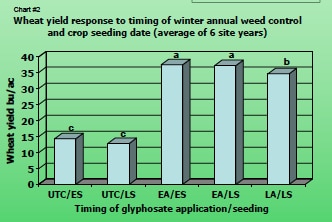
Even if growers don’t expect to seed any time soon, they may want to consider a pre-seed burnoff now to get weeds at smaller stages and before they draw down moisture and nutrients that their canola crops will need. Products registered for use ahead of canola are CleanStart, Amitrol 240 and glyphosate.
University of Saskatchewan research shows that early weed control is more important than early seeding when it comes to yield. The study was done on wheat, but lead researcher Ken Sapsford says results would be similar for canola. Winter annual weeds like flixweed, shepherd’s purse, narrow-leaved hawk’s-beard and stinkweed can remove a lot of soil moisture in the spring as they begin to grow very early and are very inefficient water users. Early weed control stops this uptake, preserving moisture and nutrients for the crop. Read the study poster: U of S study on Winter Annual Weed Control
Growers using Amitrol 240 ahead of canola should make sure not to exceed the label rates. Amitrol breaks down in the soil relatively quickly, but it can be available for crop uptake during that time since it is not strongly bound to soil as with glyphosate. If it gets into the plant, it can remain for a long time.
Here is the Export Ready message on the Amitrol 240 page in the guide to crop protection:
The Canola Council of Canada “Export Ready Program” urges canola producers to adhere strictly to product label directions. They also suggest that producers limit applications of Amitrol 240 to the pre-planting timing, with the hope of minimizing the potential for residue in the grain. Japan, a major consumer of canola, has very low tolerance for residues of Amitrol 240 in canola.
Click a province for a link to provincial guides: Alberta Saskatchewan Manitoba.
Cleavers and other hard to control winter annuals. (Link: https://www.canolawatch.org/2011/05/04/burnoff-cleavers-with-the-one-litre-rate/) Make sure to use adequate rates to control these weeds. Include a tank mix partner with glyphosate in non-canola years to protect against the evolution of glyphosate resistant cleavers. Note that many cleavers populations are Group 2 resistant so mixes with Group 2 herbicides will not be particularly effective for protecting glyphosate against resistance development.
